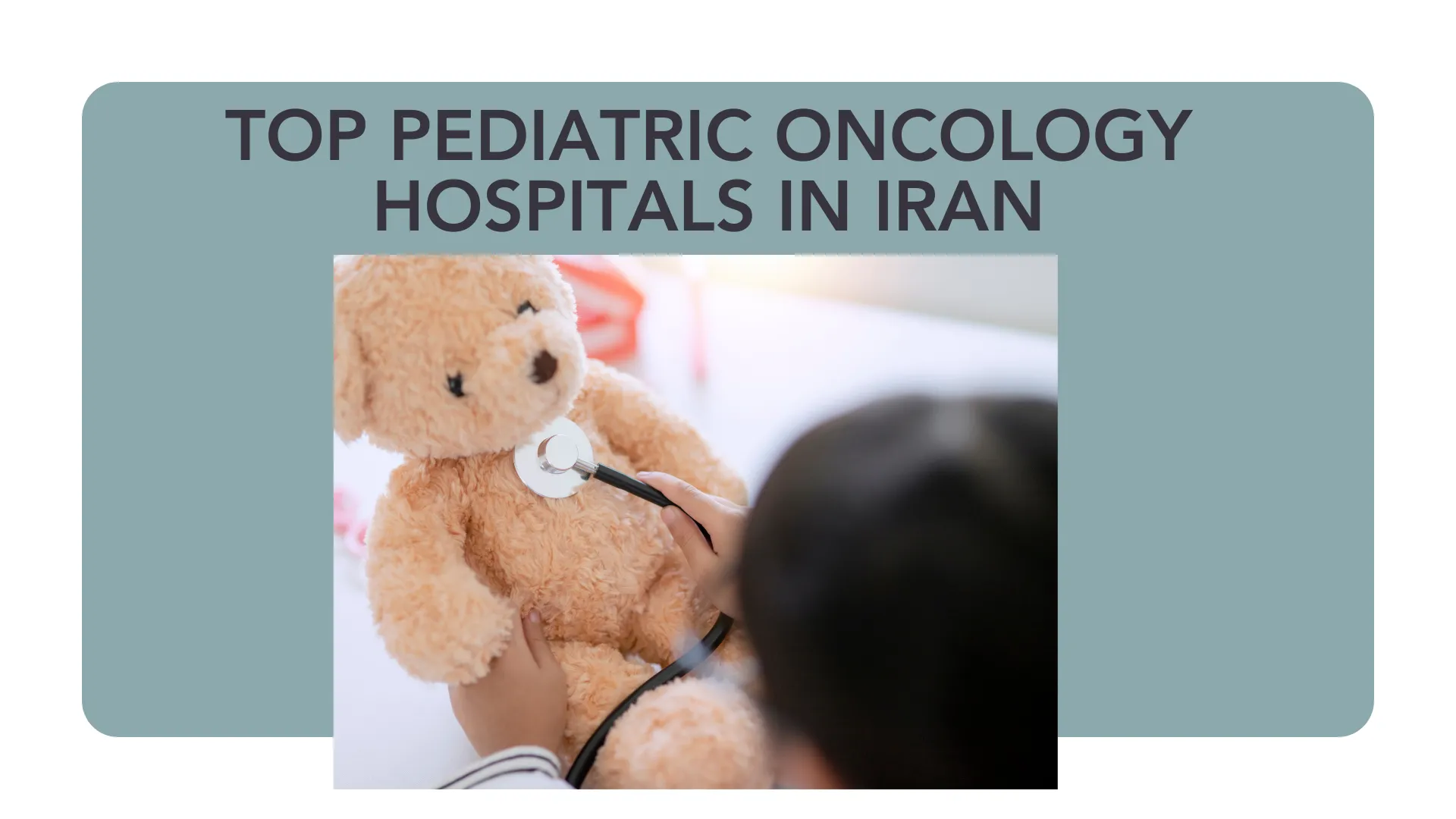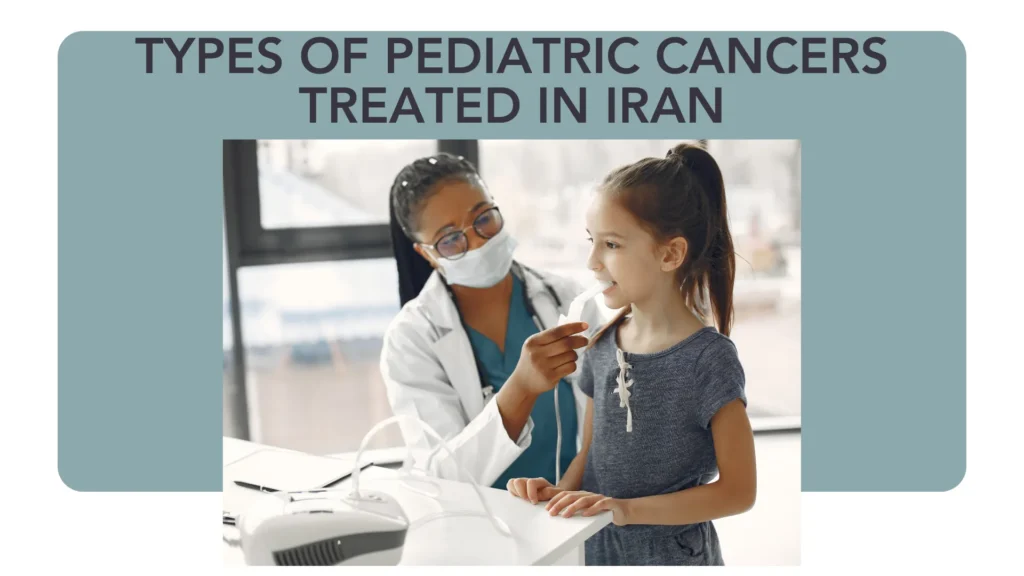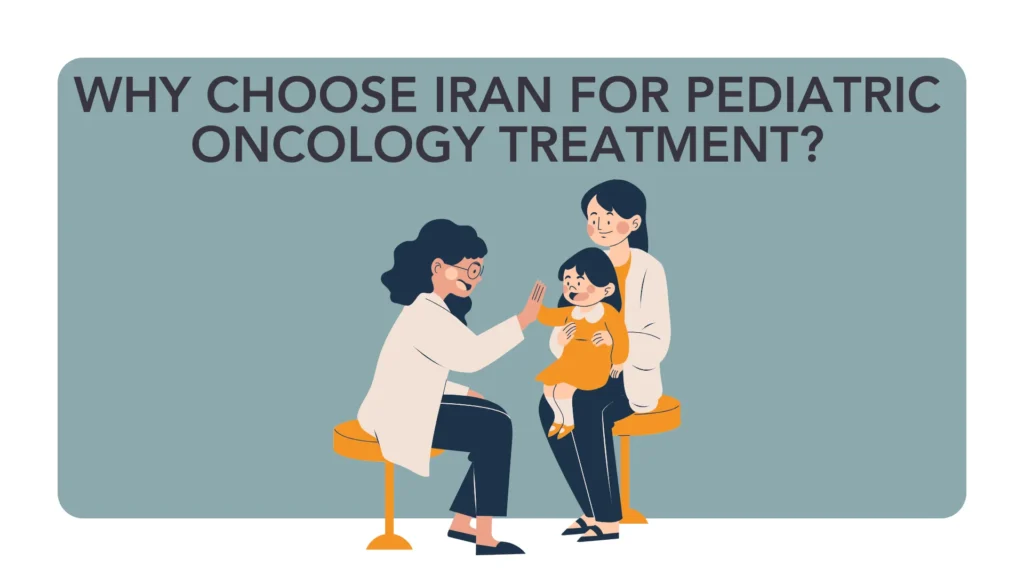
Iran has become a trusted destination for pediatric oncology, offering advanced cancer care for children at affordable costs. With modern hospitals in Tehran, Shiraz, and Mashhad, young patients receive treatment through surgery, chemotherapy, radiotherapy, and targeted therapies. These centers are equipped with PET/CT scans, precision radiotherapy, and child-focused oncology units to ensure safe and effective care. Families also benefit from compassionate support services, including translation, accommodation, and international patient guidance. By combining expertise, technology, and affordability, Iran provides children with access to world-class cancer treatment, supported by the best oncology doctors in Iran.

In Iran, pediatric oncology centers provide advanced diagnosis and treatment for a wide range of childhood cancers. Specialists use international guidelines and modern technologies to ensure effective therapies tailored to each child’s condition. The most common pediatric cancers treated in Iran include:
Leukemia (Blood Cancer): The most common childhood cancer, treated with chemotherapy, targeted therapy, and bone marrow transplantation.
Brain and Central Nervous System Tumors: Managed through surgery, radiotherapy, and supportive care to preserve neurological function.
Neuroblastoma: A rare but serious cancer of nerve tissue, often treated with surgery and immunotherapy.
Wilms Tumor (Kidney Cancer): Typically diagnosed in children under 5, treated with surgery combined with chemotherapy.
Lymphomas (Hodgkin and Non-Hodgkin): Managed using chemotherapy, radiation, and targeted drugs.
Bone Cancers (Osteosarcoma & Ewing Sarcoma): Treated with surgery, chemotherapy, and sometimes limb-sparing techniques.
Retinoblastoma (Eye Cancer): Treated with laser therapy, cryotherapy, or surgery depending on stage.
In summary, Iran offers comprehensive care for a wide range of childhood cancers, applying advanced treatments aligned with global standards. With skilled pediatric oncologists and modern facilities, families can access effective therapies that enhance survival rates and improve quality of life. For international patients, cancer treatment in Iran provides a trusted and affordable option supported by world-class hospitals and compassionate care.
Affordable Costs: Pediatric cancer treatment in Iran is up to 60–70% cheaper compared to Europe and the United States, making it highly cost-effective for international patients.
Specialized Hospitals: Renowned centers such as MAHAK Pediatric Cancer Hospital and Children’s Medical Center in Tehran are equipped with advanced oncology units, modern radiotherapy facilities, and dedicated pediatric ICUs.
Experienced Oncologists: Many Iranian pediatric oncologists have trained in Europe or North America and apply the latest international protocols for treating leukemia, brain tumors, and rare childhood cancers.
Comprehensive Care Packages: International patients benefit from integrated services including diagnosis, treatment, accommodation, translation, and family support, ensuring a smooth medical journey.
Warm Hospitality: Beyond medical treatment, families experience Iran’s culture of hospitality and emotional support, which plays a vital role in recovery.
With world-class care, affordable costs, and compassionate support, Iran has become a trusted destination for pediatric cancer treatment among international families.
Iran is home to several world-class pediatric oncology hospitals. These centers combine advanced technology with expert medical teams. As a result, they have become trusted choices for both local and international families.
MAHAK is among the most famous pediatric oncology hospitals in the Middle East. It operates as a non-profit charity and provides free cancer care. Moreover, it is equipped with modern facilities, radiotherapy units, and rehabilitation services for children and their families. Official Website
The Children’s Medical Center is the largest pediatric hospital in Iran. It is affiliated with Tehran University of Medical Sciences. In addition, it offers advanced oncology care, pediatric surgery, and specialized ICUs. The hospital also serves as a teaching and research hub, ensuring access to the latest treatment methods.
Milad Hospital is a modern multi-specialty medical center. It has a dedicated pediatric oncology department offering chemotherapy, radiotherapy, and surgery. Furthermore, its diagnostic imaging services support precise treatment. Because of its high standards and affordable prices, Milad is a preferred option for international patients.
Shariati Hospital is one of Iran’s top centers for cancer research and treatment. Its pediatric oncology unit manages both common and rare cancers. In addition, the hospital provides stem cell transplantation and advanced therapies. It also collaborates with research institutes, which ensures access to innovative treatment protocols.
Razavi Hospital in Mashhad delivers international standards of healthcare. Its pediatric oncology department provides chemotherapy, surgery, and radiotherapy with advanced equipment. Moreover, its location in a major pilgrimage city attracts many international families. The hospital is also known for comprehensive patient support services.
In summary, Iran’s leading hospitals combine modern facilities, skilled specialists, and supportive services. Therefore, the country has become a trusted destination for pediatric cancer treatment for families around the world.
Pediatric cancer treatment outcomes in Iran have improved greatly in the last two decades. Thanks to advanced hospitals and skilled oncologists, survival rates are now close to international standards. Moreover, many centers follow updated treatment protocols, which helps provide children with better chances of recovery.
The five-year survival rate for acute lymphoblastic leukemia (ALL), the most common childhood cancer, is reported at 70–75%. Brain tumors, which are more challenging, have a 60–65% survival rate. In addition, Hodgkin’s lymphoma shows particularly positive results, with more than 80% survival. Other solid tumors such as Wilms’ tumor and neuroblastoma record average survival rates of 65–75%, depending on the stage of diagnosis and access to specialized care.
| Cancer Type | Five-Year Survival Rate in Iran |
|---|---|
| Acute Lymphoblastic Leukemia (ALL) | 70–75% |
| Brain Tumors | 60–65% |
| Hodgkin’s Lymphoma | 80%+ |
| Wilms’ Tumor / Neuroblastoma | 65–75% |
Overall, Iran’s pediatric oncology centers achieve 65–75% survival, making the country a trusted and affordable choice for families worldwide.

Iran is home to highly skilled pediatric oncologists who play a vital role in improving childhood cancer outcomes. Many of these doctors have received advanced training in Europe or North America, bringing international expertise back to Iran. They specialize in treating leukemia, brain tumors, and rare childhood cancers. Moreover, they work in collaboration with top hospitals such as MAHAK, the Children’s Medical Center, and Razavi Hospital. For families seeking expert care, the best pediatric cancer doctors in Iran provide world-class treatment combined with compassion and cultural support.
Families often want to compare survival outcomes before choosing a treatment destination. In Iran, the average five-year survival rate for pediatric cancers is 65–75%, which is close to international benchmarks. Moreover, some cancers, such as Hodgkin’s lymphoma, exceed 80%, showing results on par with top global centers.
Iran: Affordable treatment with survival rates of 65–75% on average.
Turkey: A regional competitor with survival rates of 70–78%.
Europe / USA: Advanced systems offering 75–85% survival, but with far higher costs.
Global Middle-Income Average: Typically 55–65%, which places Iran above many peers.
| Country / Region | Average Survival Rate | Hodgkin’s Lymphoma | Leukemia (ALL) | Brain Tumors |
|---|---|---|---|---|
| Iran | 65–75% | 80%+ | 70–75% | 60–65% |
| Turkey | 70–78% | 82% | 72–76% | 62–67% |
| Europe / USA | 75–85% | 85–90% | 80–85% | 65–70% |
| Global Average (Middle-Income) | 55–65% | 70–75% | 60–70% | 50–60% |
Iran’s outcomes are very close to Turkey and Western countries, while treatment costs remain far lower, making it an attractive option for international patients.
Choosing the right country for treatment is not only about hospitals and doctors. Families also need reliable medical tourism services that make their journey smoother. In Iran, specialized agencies and hospitals provide comprehensive support for international patients, ensuring both medical and non-medical needs are met.
Visa Assistance: Fast-track medical visa processing for patients and their companions.
Travel & Airport Transfers: Pick-up and drop-off services from international airports.
Accommodation Packages: Affordable hotels and furnished apartments close to hospitals.
Interpreter Services: Professional translators to assist families during hospital visits.
Family Support Programs: Counseling, educational resources, and activities for children during treatment.
Tourism Opportunities: Sightseeing tours to cultural and religious sites for families during recovery periods.
These services reduce stress, save time, and allow families to focus on the child’s recovery. Moreover, combining affordable medical care with Iran’s hospitality and cultural richness makes the country a unique medical tourism hub.
With comprehensive medical tourism services, Iran not only provides advanced pediatric cancer treatment but also ensures a supportive and comfortable journey for international families.
Iran stands out as a trusted destination for pediatric cancer treatment, offering advanced care, affordable costs, and compassionate support for families. Survival rates for childhood cancers such as leukemia and lymphoma are close to international standards, while hospitals like MAHAK, the Children’s Medical Center, and Razavi Hospital provide world-class facilities. In addition, families benefit from complete medical tourism services including visas, accommodation, and interpreters.
wmedtour connects international patients directly with these leading hospitals, ensuring a smooth journey from diagnosis to recovery. With wmedtour, families can confidently access high-quality pediatric cancer care in Iran.
1. Is pediatric cancer treatment in Iran safe and reliable?
Yes. Iran offers advanced hospitals, skilled oncologists, and survival rates close to international standards, ensuring safe and effective treatment.
2. How much does pediatric cancer treatment cost in Iran?
On average, treatment costs range from $10,000–20,000, which is 60–70% cheaper than Europe or the USA.
3. Which hospitals are best for pediatric cancer in Iran?
Top centers include MAHAK Hospital, Children’s Medical Center (Tehran), Shariati Hospital, Milad Hospital, and Razavi Hospital (Mashhad).
4. Are Iranian doctors internationally trained?
Many pediatric oncologists in Iran have studied or trained in Europe and North America, applying global treatment standards.
5. Does wmedtour help with medical visas and travel?
Yes. wmedtour provides visa support, airport transfers, accommodation, interpreters, and hospital coordination for international families.
6. What is the success rate of pediatric cancer treatment in Iran?
Overall survival rates are 65–75%, while some cancers like Hodgkin’s lymphoma exceed 80%, comparable with international averages.
7. Are treatments in Iran recognized internationally?
Yes. Iranian hospitals follow international oncology protocols, and their treatments are globally recognized and trusted.
8. What additional services are offered for families?
Families receive counseling, rehabilitation, translation services, and even cultural or sightseeing opportunities during recovery.
9. How long does pediatric cancer treatment usually take?
The duration depends on the cancer type. Treatment can last from a few months to over a year, often including follow-up care.
10. Why choose Iran over other countries for pediatric cancer treatment?
Iran combines high success rates, affordable costs, advanced hospitals, and warm hospitality. With wmedtour, families get a seamless and supportive medical journey.